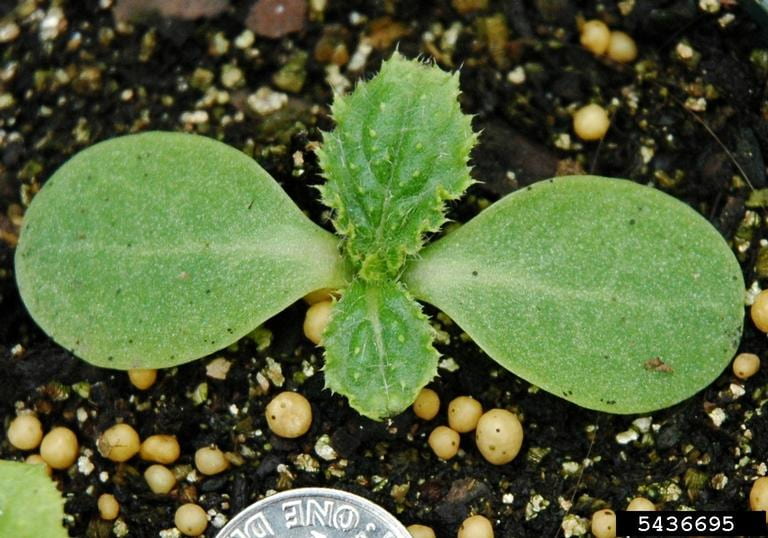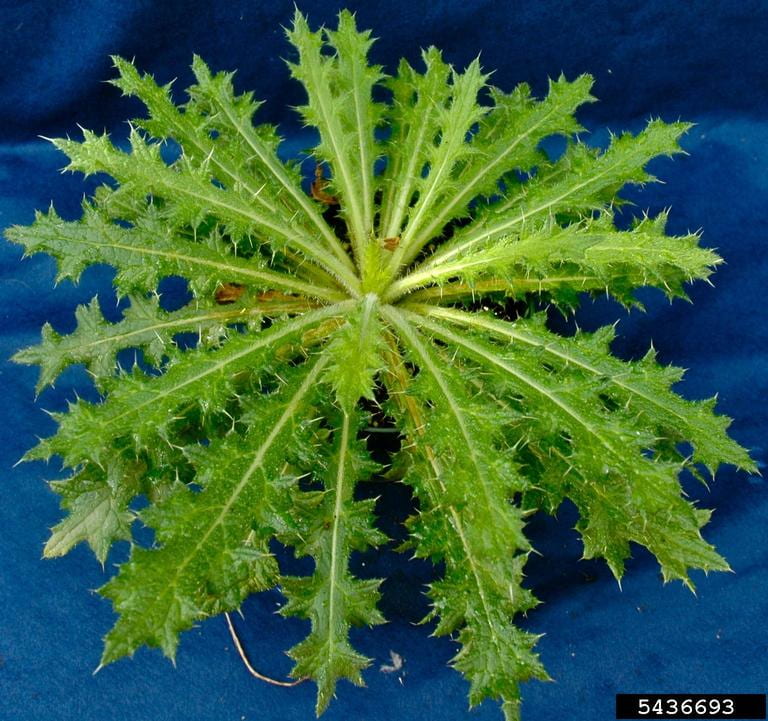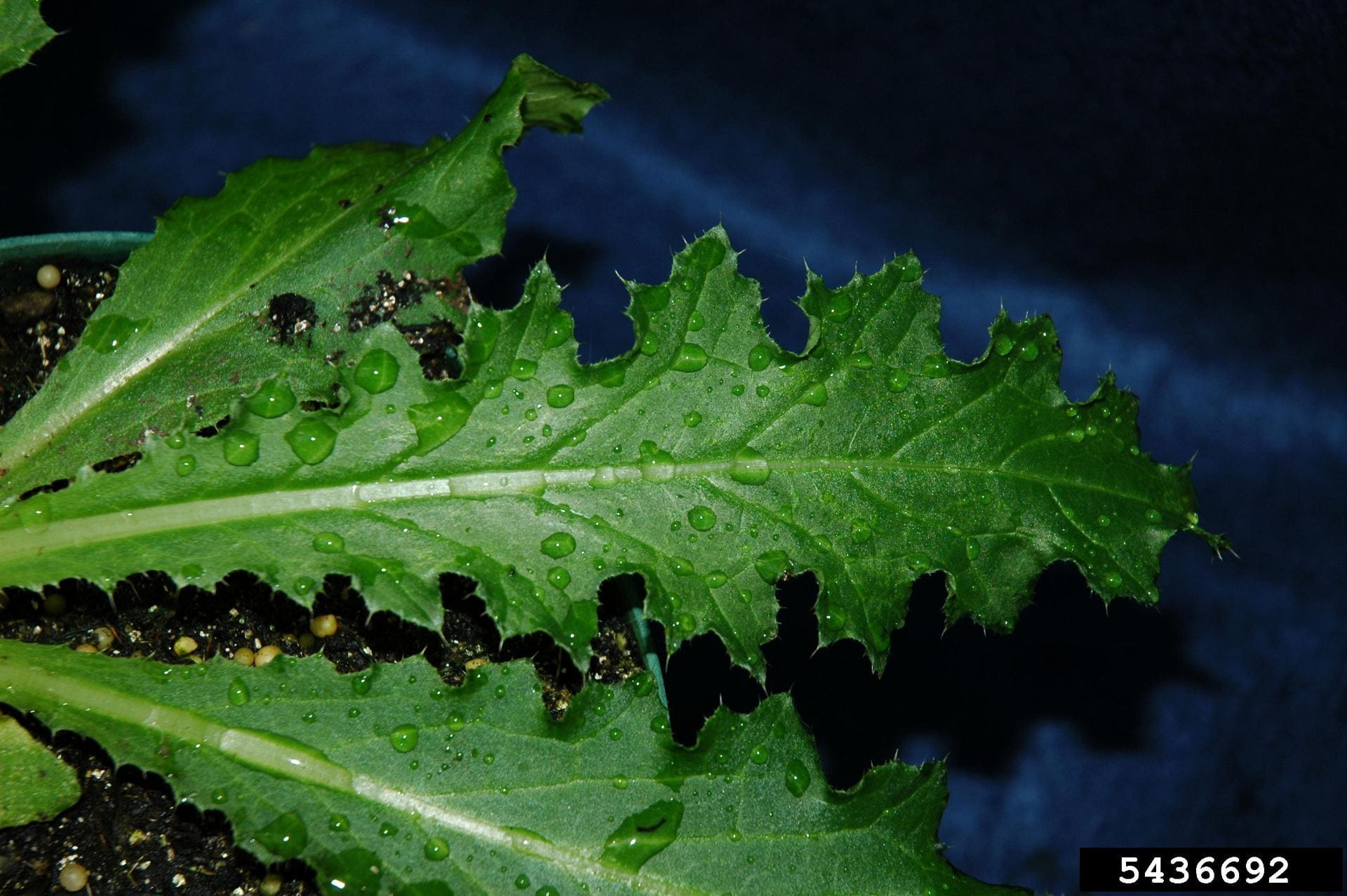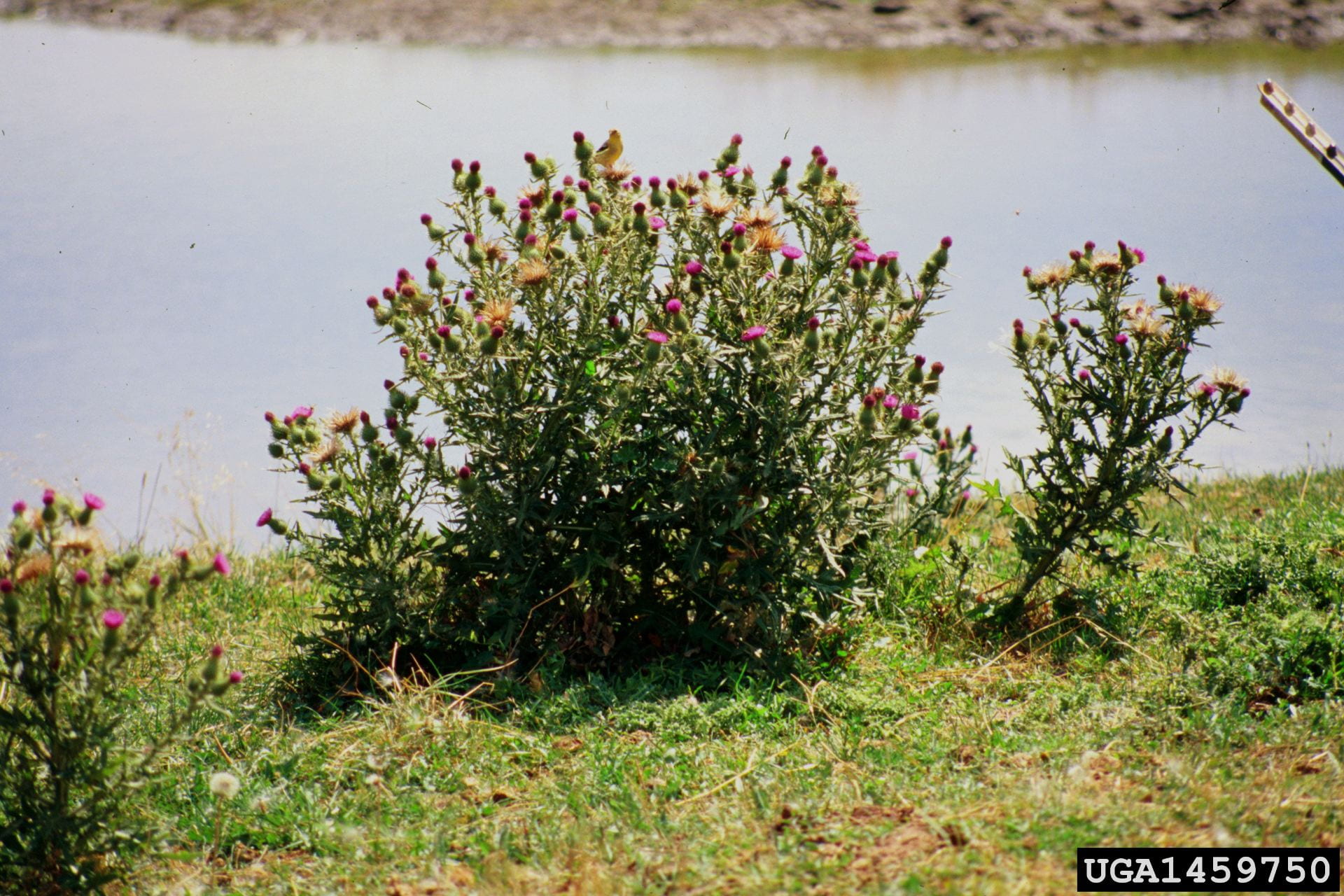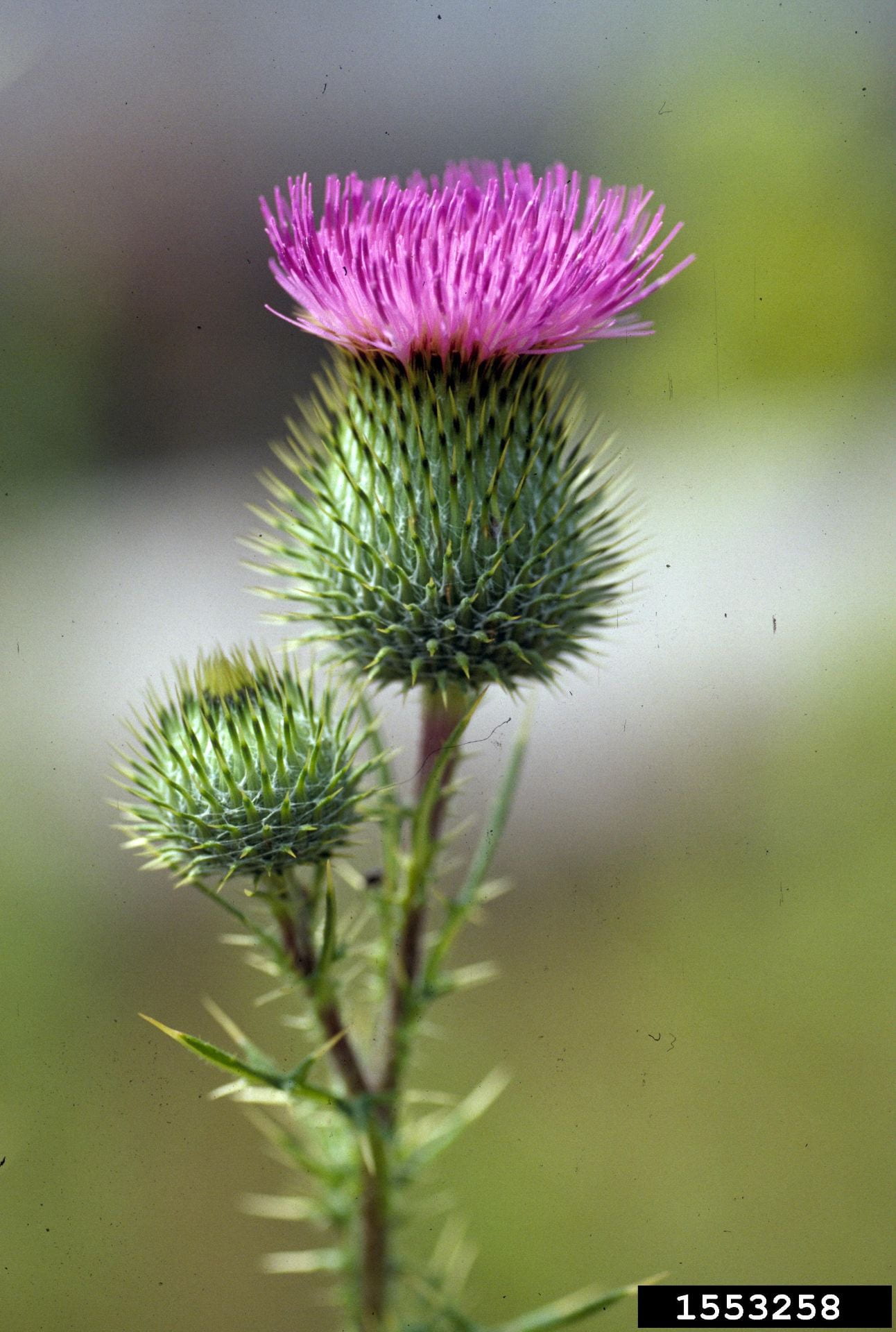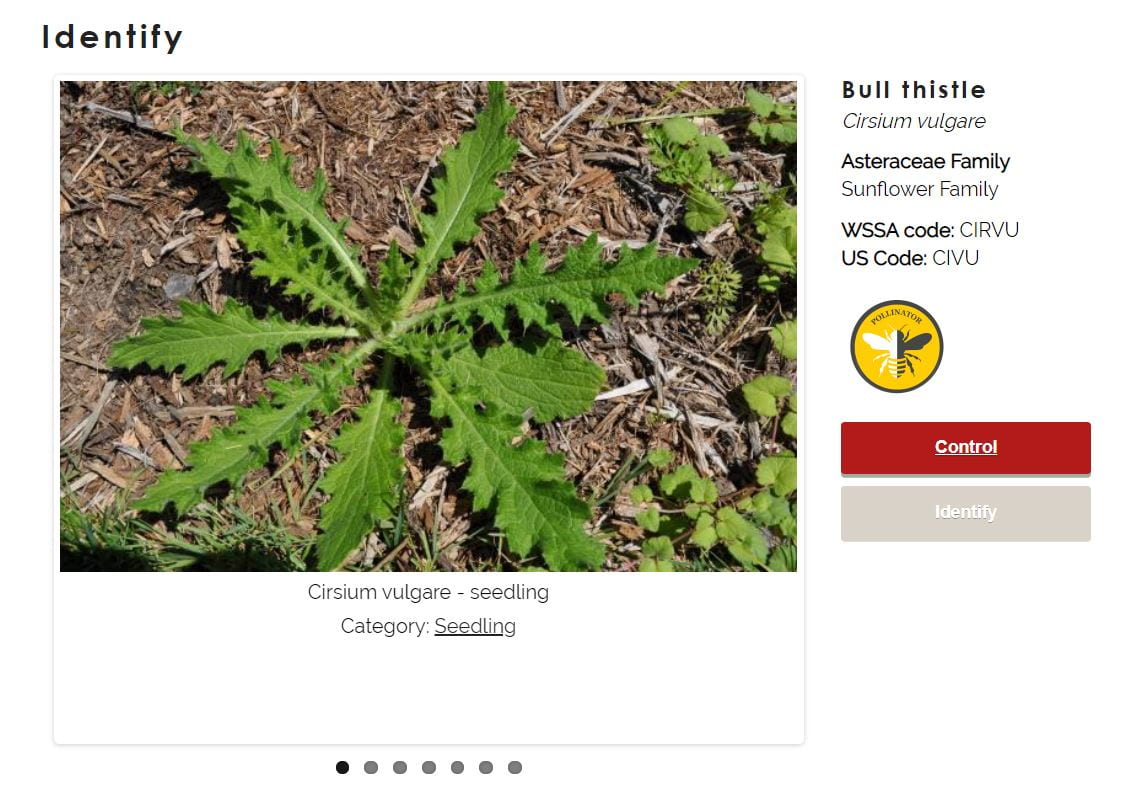Bull Thistle (Cirsium vulgare) is a biennial that is commonly found throughout the United States and southern Canada. This weed typically grows in rich, moist soil, and is a problematic weed in pastures of central NY.
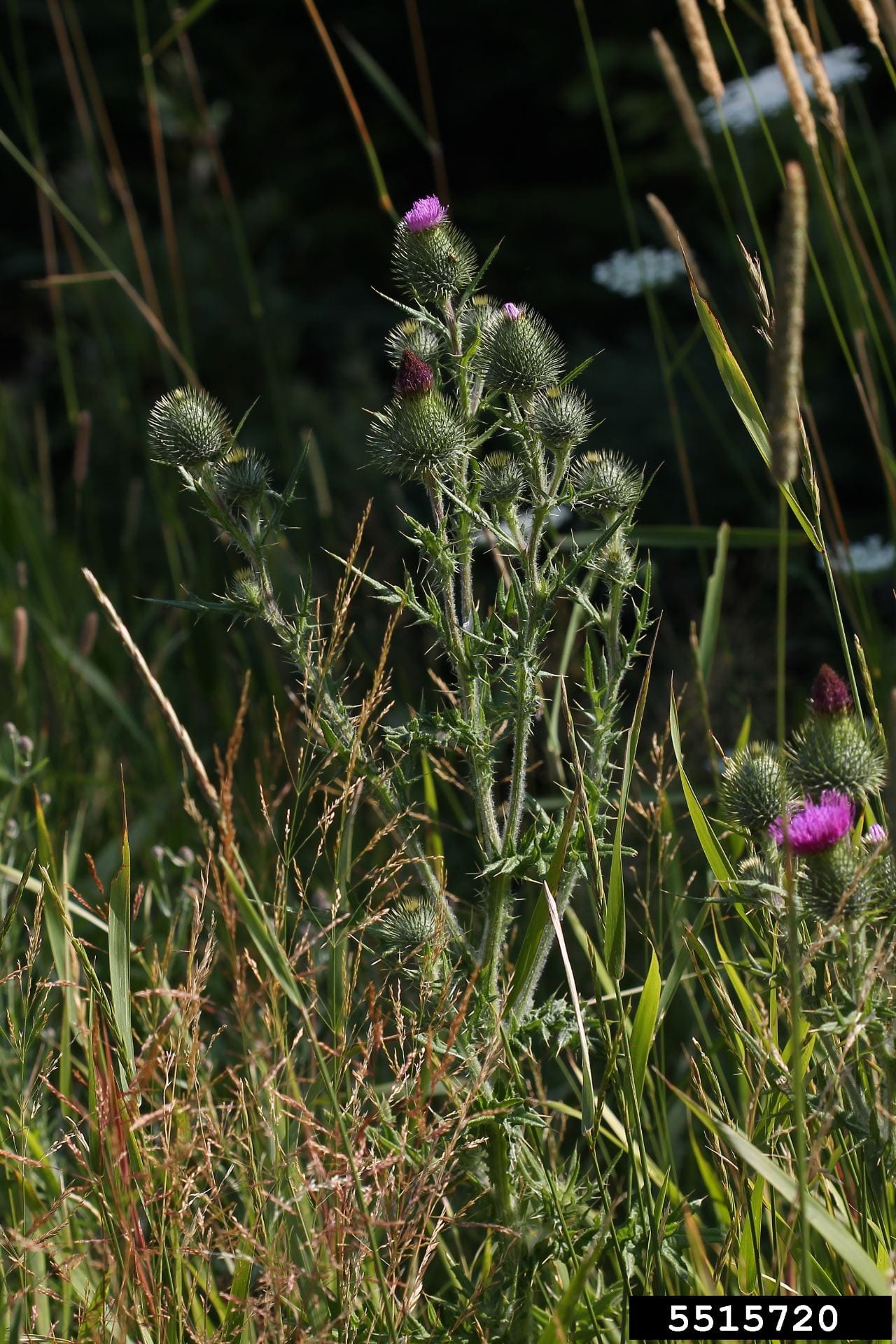
Mature Bull Thistle plant
photo by Chris Evans via University of Illinois, Bugwood.org
Identification
Seedling: Cotyledons of the bull thistle are oval-shaped, being broadest at the apex. The early leaves of its young plant are also oval with a spine-like fringe. The second true leaf is dark green and covered densely with white hairs on the upper surface. The next emerging leaves become longer and have similar spine-like lobes.
Leaves: Young leaves form into a basal rosette. Leaves are alternate and lance-shaped with and deep lobes. Like the young leaves, older leaves have pronounced stiff spines along the edges, stiff hairs on the upper surface, and softer white hairs below.
Mature plant: Stems of the mature plant are branched and erect, and the plant is taprooted. The leaves extending to the stem give the stem a winged appearance. Stems are usually 6/10-9/10 m (2-3 ft) tall, but can get more than 3/2 m (5 ft) tall.
Flower description: Flowers emerge in June and are present until October. They are produced as single heads (3-4 cm (6/5-8/5”) long and 2-4 cm (4/5-8/5”) in diameter) at the end of branches and are deep pink to purple with spines covering the base of the flower. Seeds are 3-4mm (1/10-2/10”) long with a feathery structure to assist dispersal (pappus). Each flower can produce up to 300 seeds.
Bull thistle flower with spiny bracts below flower.
Photo by John Cardina of Ohio State University, via Bugwood.org.
Management
Chemical control
Click above for the chemical control of Bull Thistle from the Cornell Weed ID site.
Use this tool to look up the efficacy of herbicides on a particular weed species. For general guidance on weed control, get the latest edition of the Cornell Crop and Pest Management Guidelines.
Non-chemical control
The methods of tilling, hoeing, and hand-pulling are effective if done before flowering. If hand-pulling, the plant must be removed from below the surface of the soil, making sure that no leaves are attached. Mowing may only be an effective form of management if done so immediately before flowering or when plants have just begin to flower, and done fo repeatedly throughout the growing season. Having the areas involving Bull Thistle be grazed by sheep, goats, and/or horses may also be effective, if possible.
The Thistle Head Weevil, Rhinocyllus conicus is a biological control agent effective for managing the growth of this weed. R. conicus is established in the western United States and targets various thistle species. The Bull Thistle gall gly (Urophora stylata) is another biocontrol agent, but it is not yet established in California and is not impactful in other states.
See A Grower’s Guide to Organic Apples from Cornell for non-chemical weed control options in apple orchards.
References
Uva R H, Neal J C, DiTomaso J M. 1997. Weeds of the Northeast. Book published by Cornell University, Ithaca NY. The go-to for weed ID in the Northeast; look for a new edition sometime in 2019.
Cornell University’s Turfgrass and Landscape Weed ID app. Identification and control options for weeds common to turf, agriculture, and gardens in New York; uses a very simple decision tree to identify your weed.
Organic management suggestions are from Dr. Charles Mohler of Cornell University. Look for an upcoming book from Dr. Mohler on ecological management of weeds, from Cornell University Press.
Profile on Bull Thistle with extensive descriptions on weed management as a part of the Weed Report from Weed Control in Natural Areas in the Western United States, shared by University of California, Davis.
Identification information on Bull Thistle by University of Wisconsin-Extension’s Renz Lab. Descriptions of the plant structures as well as comparisons to similar plants.
Peck, G M and I A Merwin. A Grower’s Guide to Organic Apples. Covers organic weed control methods for organic apple orchards.
Breth, D I and E Tee. 2016. Herbicide AI by Weed Species. This tool allows you to look up the efficacy of an herbicide active ingredient on a particular weed species.

